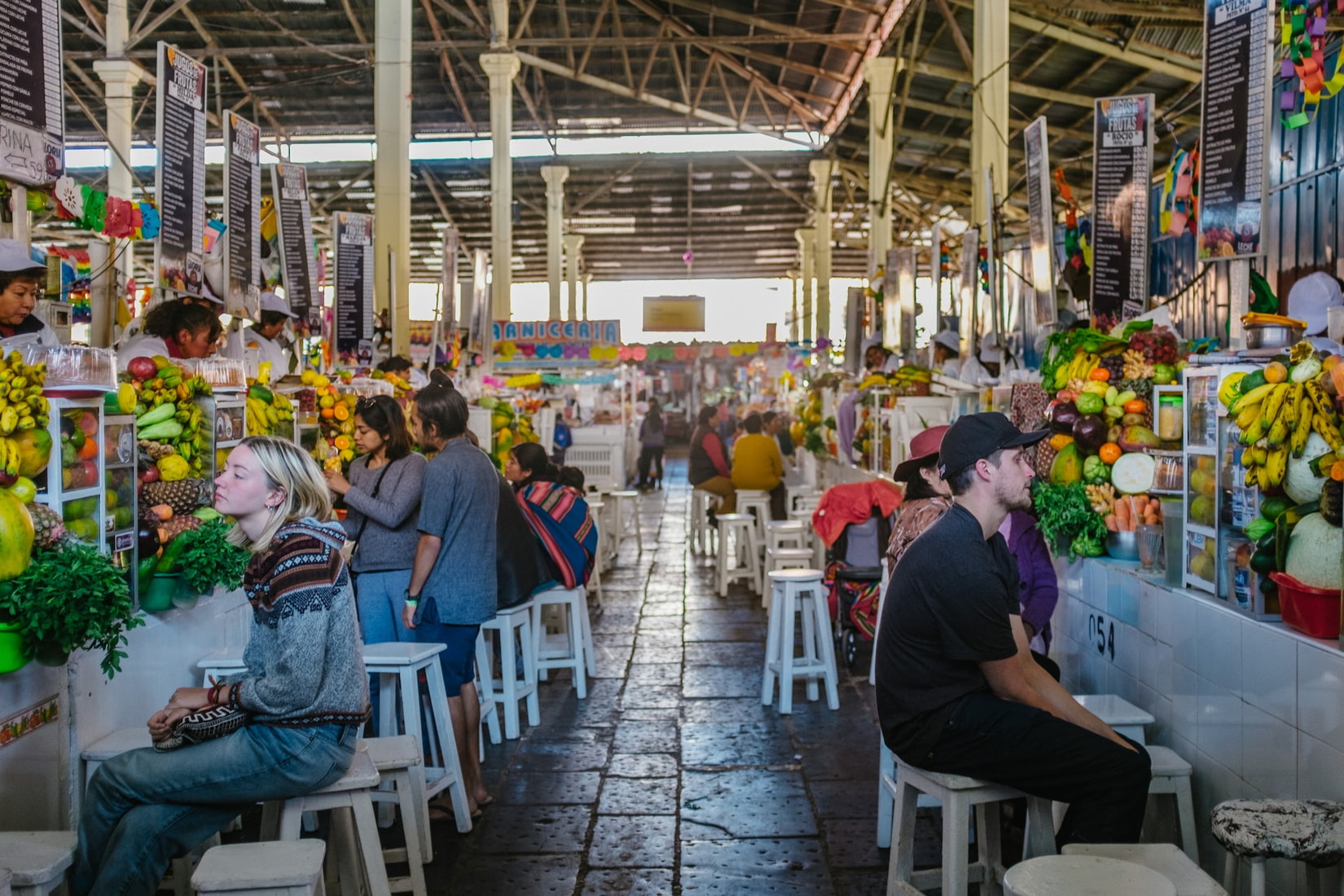
14 Top-Rated Tourist Attractions in Cusco
14 Top-Rated Tourist Attractions in Cusco, the former capital city of the Incas, is a city filled with history and culture. It’s actually the oldest continuously inhabited city in the Americas and a UNESCO World Heritage Site! When walking through the city, you’ll notice many stone walls lining the streets. These walls were built by the Incas and became the foundation for the Spanish architecture we see today.
Despite the many earthquakes that have shaken the city over the years, the Inca stonework has remained intact. While other buildings crumbled, Cusco has always been able to rebuild its churches and historical landmarks.
Although most tourists come to Cusco to visit Machu Picchu, the Sacred Valley, and other Inca sites. The city itself is a treasure trove of attractions that are worth exploring. The Plaza de Armas and surrounding streets are full of restaurants, hotels, and shopping. And don’t miss out on the San Blas district, with its charming shops and restaurants, and breathtaking city views.
If you’re planning a trip to Cusco, make sure to check out our list of top attractions to ensure you don’t miss out on any must-see spots.
Santo Domingo and Coricancha
The church of Santo Domingo is a significant historical site built on the ruins of the famous Inca site of Coricancha. Its also known as the “golden courtyard” in Quechua. This temple of the Sun was adorned with gold sheets, statues, and ornaments, including a large golden disc that reflected sunlight to create a stunning visual display.
Unfortunately, when the conquerors arrived in Cusco, they stripped everything of value, including the gold, which was melted down. Today, all that remains of Coricancha is the Inca stonework that forms the foundation of Santo Domingo’s church.
Despite the destruction, the six-meter-high curved Inca wall at one end of the church still stands strong, having withstood the major earthquakes. They rocked Cusco in 1650, 1950, and 1986. The courtyard still features a gold-covered structure of 55 kg. The Inca rooms with sharp angles that contrast with the Spanish architecture’s rounded arches.
Visitors can explore a small museum that houses a model of what Coricancha likely looked like. Especially in its prime and displays artifacts from the pre-Inca, Inca, and colonial periods, many of which were excavated from the Coricancha site. The museum provides a fascinating insight into the history of this local civilization.

Sacsayhuaman
The massive fortified complex of Sacsayhuaman is a must-visit ruin in Cusco, and the best part is that it’s within walking distance from the historic center. Many tourists even stop by on their way to Pisac. This incredible site is believed to have both military and religious significance and played a significant role in Incan history.
Cusco was designed to resemble a puma, and Sacsayhuaman serves as the head of the puma. The three ramparts of zigzagging defense walls stretch for almost 300 meters. They are designed to look like the teeth of the puma.
But the real wonder of this ruin is not just its size. It’s the size of the stones used in its construction and the complexity of the stonework. In the past, builders used to haul blocks from Sacsayhuaman to Cusco for construction. It occured until the site was protected in the 1930s. Hence, what you see today is only about 20% of the original mass.
The largest stones, which were the most difficult to move, were left at the site. They formed the basic structure, and some of them measure more than eight meters high and weigh 361 tons. Despite their massive size and often irregular shapes, the stones fit together with incredible precision. Even modern engineers are left amazed, wondering how the Incas achieved such a remarkable feat of engineering.
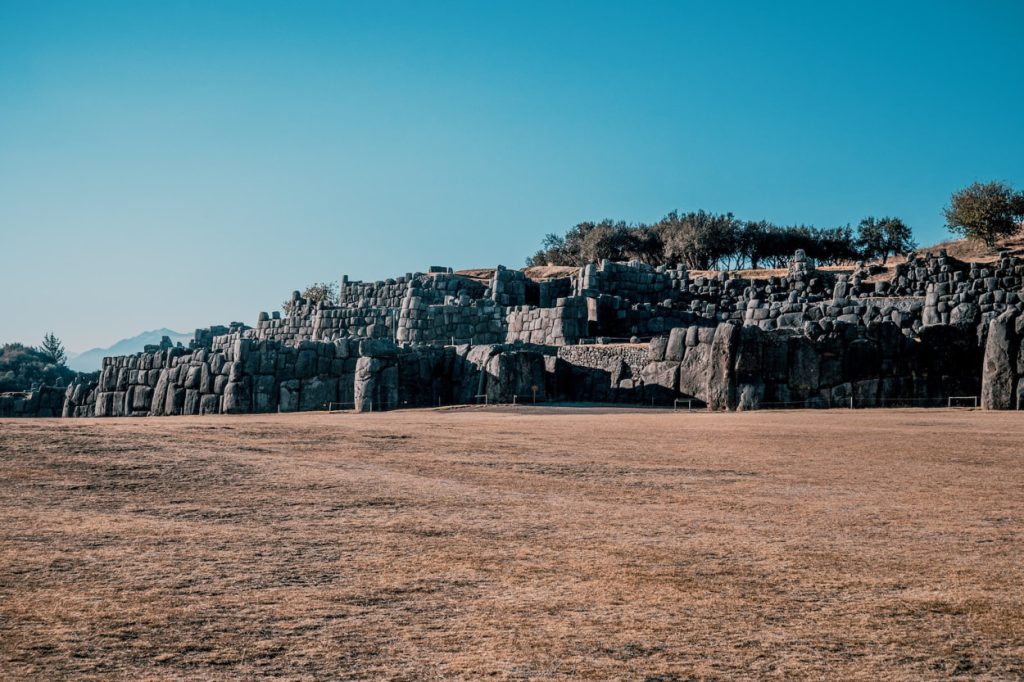
Plaza de Armas
The Plaza de Armas has been the heart of Cusco since the time of the Inca Empire when it was known as Huacaypata or Aucaypata. Today, it remains the city’s main square and is a hub of activity for both locals and tourists.
The main attraction of the Plaza de Armas is the stunning cathedral located on the northeast side. It’s not uncommon to see people lounging on the steps, taking in the beauty of the square.
On either side of the cathedral are the churches of Jesus Maria and El Triunfo, respectively. The southeastern side is dominated by the church of La Compania. It boasts an ornate façade but is often mistaken for the cathedral due to its similar appearance.
The remaining two sides of the Plaza de Armas are lined with colonial arcades and the central area. It features benches, gardens, and fountains for visitors to enjoy. At night, the plaza comes alive, with people strolling around and the buildings illuminated with spotlights.
Strolling around the plaza at night is one of the most popular things to do in Cusco. It’s a vibrant and lively atmosphere, with plenty of opportunities to soak in the local culture and atmosphere.
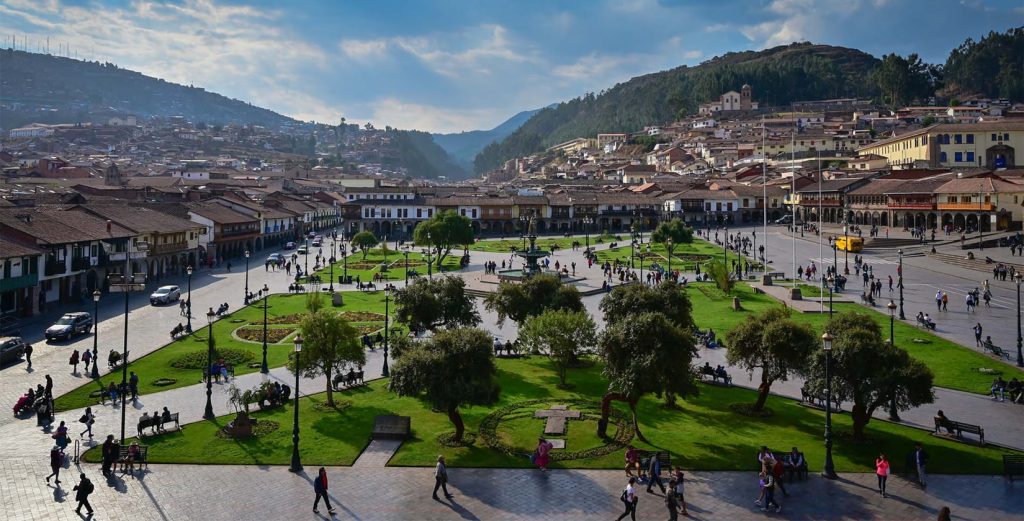
Inca Walls
As you walk through the streets of Cusco, it’s impossible not to be awed by the ancient Inca Walls. These walls, which are the foundations of modern-day Cusco, are intricately constructed and almost like an outdoor museum. While they can be found all over the city, some areas are especially noteworthy.
Loreto and Hatunrumiyoc are two of the best places to see these walls. Loreto, which runs southeast from the Plaza de Armas, has Inca walls lining both sides. The south wall is from Amarucancha, the site of the Palace of Huayna Capac. Whereas, the north wall is from the Acllahuasi, one of the oldest walls in Cusco.
Hatunrumiyoc, on the other hand, runs northeast of the Plaza de Armas. It is famous for the 12-sided stone found along the east wall. You can easily spot this stone as souvenir sellers usually set up shop right across from it. The curved end of Santo Domingo church is another example of outstanding Inca stonework that is worth checking out.
Cathedral
Development on Cusco’s house of God started in 1559 and was finished in 1669. It is based on the site where the Inca Wiracocha’s castle once stood. The three-aisled nave of the Renaissance-style church is upheld by 14 monstrous support points.
The principal raised area, made of silver, weighs 400 kilograms, and the ensemble slows down are complicatedly cut from cedar. Significantly more great is the church’s assortment of in excess of 400 works of art from the Escuela Cuzqueña, the Cusco School.
These canvases from the sixteenth and seventeenth hundreds of years are extraordinary in that they reflect European style. They likewise have a conspicuous local Andean impact. Marcos Zapata’s The Last Dinner shows the missionaries eating guinea pigs. The composition of the execution in the sacristy is credited to Van Dyke.
Toward the right of the house of prayer is the congregation of El Triunfo. On the left is the congregation of Jesus Maria. El Triunfo was the main Christian church in Cusco. The Spanish constructed El Triunfo on the site of the Inca arsenal. In 1536, they were caught there during an attack. The Incas consumed the city, yet the fire in the covered top of the arsenal went out strangely.
The congregation worked to respect the narrative of the wonder of the Spanish who had gotten away. Later, retook the city. The Capilla del Triunfo houses a renowned Alonso Cortes de Monroy painting of the 1650 seismic tremor that crushed Cusco.
Address: Plaza de Armas, Cusco
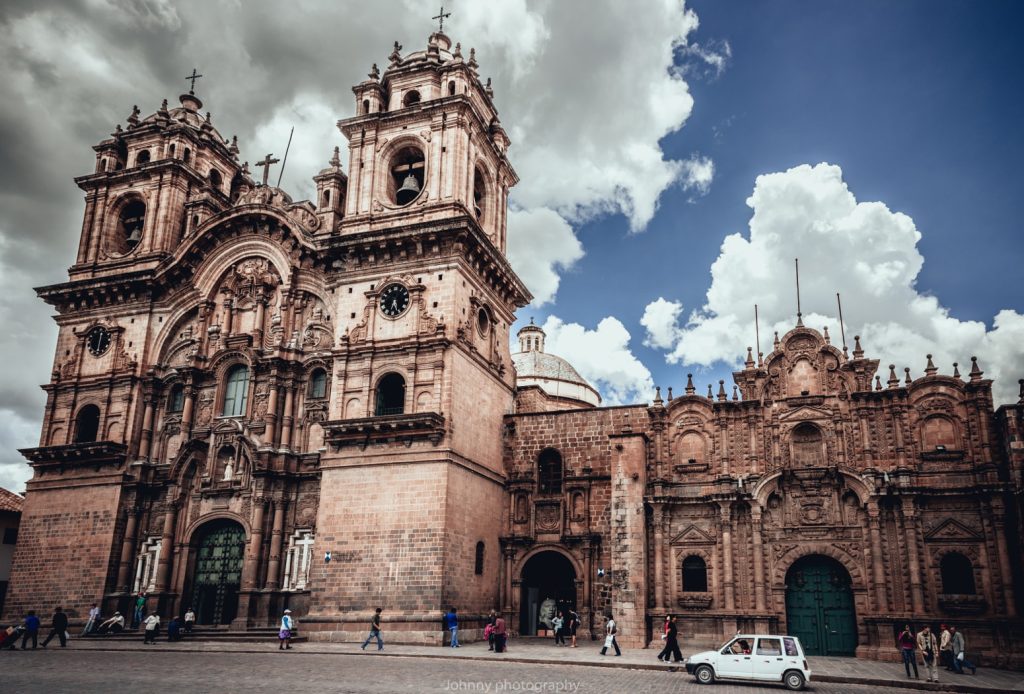
Museo Inka
The Museo Inka in Cusco is the ideal museum to visit for those interested in the history of the Incas. The building itself is a beautiful example of colonial architecture, built on Inca foundations, and has a rich history as the former home of Spanish Admiral Francisco Aldrete Maldonado.
Inside, the collection showcases the Inca culture and its impact on Peruvian society. The museum features an extensive collection of ceramics, textiles, metalwork, goldwork, jewelry, mummies, and skulls. In addition, it includes examples of trepanning, an ancient surgical technique. The museum is also home to the world’s largest collection of carved and painted wood cups. They are known as queros, with over 450 on display.
One of the highlights of visiting the Museo Inka is the opportunity to see traditional weaving techniques demonstrated by local weavers from the Centro de Textiles Tradicionales de Cusco in the courtyard. The museum is a must-visit for anyone interested in the history and culture of the Incas.
Address: Cuesta del Almirante 103, Cusco
Museo Casa Concha
If you’re intrigued by the Inca civilization and want to learn more, the Museo Inka in Cusco is a top-notch destination. The museum is housed in a stunning colonial-era building that was constructed on top of ancient Inca foundations. Its former owner was none other than Spanish Admiral Francisco Aldrete Maldonado, so the history here is truly rich.
As you explore the collection, you’ll get a deep understanding of Inca culture and its impact on Peruvian society. The exhibits feature an impressive range of objects, from ceramics and textiles to goldwork, jewelry, and mummies. Even skulls show evidence of ancient surgical techniques. You’ll also marvel at the world’s largest collection of carved and painted wood cups, which are known as queros and number over 450.
A visit to the Museo Inka wouldn’t be complete without seeing the traditional weaving techniques demonstrated by local artisans from the Centro de Textiles Tradicionales de Cusco in the charming courtyard. All in all, if you’re fascinated by the history and culture of the Incas, the Museo Inka should definitely be on your must-visit list.
Address: Santa Catalina Ancha 320, Cusco
Official site: http://www.museomachupicchu.com
La Compania
La Compania, also known as Compania de Jesus, is a Jesuit church that was constructed during the 16th century in Cusco. Unfortunately, it suffered severe damage during the earthquake of 1650, but the rebuilding process was finished in the late 1660s. La Compania caused quite a stir when it was being built because its grandeur threatened to surpass that of the cathedral in the same square.
The bishop of Cusco was not pleased with the lavish design of the church and brought the argument to Pope Paul III to arbitrate. Although the Pope sided with the bishop, the Jesuits were almost finished building La Compania by the time word of his decision reached Cusco, so it had little effect. The impressively ornate Baroque façade of La Compania still rivals the cathedral, and it’s especially stunning when illuminated at night. But the façade pales in comparison to the magnificent gold altarpiece adorned with polychrome statues that await visitors inside.
La Compania was built on the foundations of the palace of Huayna Capac, the last ruler of the united Inca Empire. His empire stretched across much of present-day Peru, Bolivia, Ecuador, Argentina, Chile, and southwestern Colombia. If you’re looking for a glimpse into the history and architecture of Cusco, La Compania is a must-visit spot.
Address: Plaza de Armas, Cusco
Museo de Arte Precolombino (Pre-Columbian Art Museum)
If you’re interested in ancient art, the Pre-Columbian Art Museum is a must-visit when in Cusco. You’ll find an impressive collection of over 450 artifacts from the Nasca, Moche, Huari, Paracas, Chimú, Chancay, and Inca cultures, dating back to 1250 BC and extending all the way to AD 1532. The items on display include stunning jewelry, ceramics, gold and silver work, weavings, and other artifacts. Each with English signage to help you fully appreciate their significance.
But that’s not all. The museum also has a dedicated room showcasing paintings from the Escuela Cuzqueña, also known as the Cusco School, as well as a hall filled with wooden sculptures. Despite the collection being relatively small, each piece has been expertly chosen to give visitors a true sense of the art and culture of the ancient Peruvian civilizations.
And the location of the museum is impressive as well – it’s housed in the former mansion of the conqueror Alonso Díaz. Come explore the treasures of the Pre-Columbian Art Museum for a glimpse into the rich history and artistry of Peru.
Address: Plaza de las Nazarenas 231
Official website: https://mapcusco.pe/en/
La Merced
La Merced, a Baroque church and convent, is one of the important colonial structures in Cusco. It was built between 1657 and 1680 to replace an earlier church that was destroyed in the 1650 earthquake. Although it is not as famous as the cathedral or La Compania, La Merced is still considered a significant site in Cusco.
The church houses a gold monstrance adorned with precious stones and a giant pearl, which is said to be the second largest in the world. Visitors can also admire a carved choir, 18th-century paintings depicting the life of San Pedro Nolasco, and several exceptional lunettes featuring scenes from the life of the Virgin Mary. These lunettes were painted by an anonymous Cusco master in the early 18th century.
The two-story cloister is an especially beautiful feature of the church. You can find La Merced just south of the Plaza de Armas.
San Blas
San Blas is a charming neighborhood perched on a hill to the northeast of the Plaza de Armas in Cusco. It’s a vibrant area with narrow, cobblestoned streets lined with small art galleries and artisan workshops, which have been here since Inca times. In the evenings, the neighborhood comes to life as shops and restaurants open, but Saturdays are especially lively when the colorful market stalls fill San Blas Plaza.
At the end of the plaza stands the adobe church of San Blas, which was built in 1562. Inside, visitors can admire an ornate gold Baroque altar and an exceptional pulpit carved from a single tree. It’s said that the skull upon which the sculpture of St. Paul rests its foot is that of the pulpit’s creator. The church also offers a terrace above the plaza with fantastic views across the red-tile rooftops of Cusco.
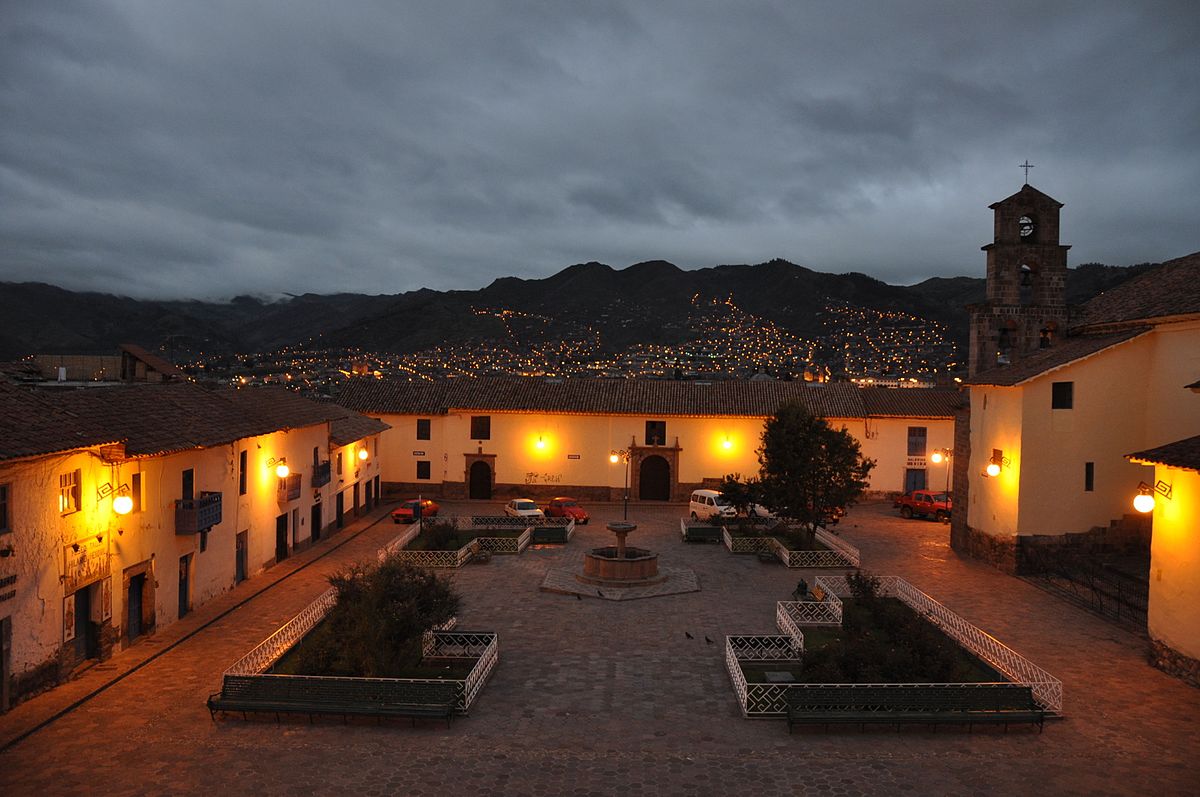
Qenqo
Qenqo sounds like a fascinating archaeological site with its unique rock-cut chambers and mysterious channels. It’s interesting to note that its exact purpose remains unknown despite various speculations. The presence of an Intiwatana and the early accounts describing the site covered in gold add to its intrigue. Its location just four kilometers from Cusco makes it a convenient and worthwhile visit for anyone interested in Inca history and culture.

San Francisco Church and Monastery
If you’re exploring Cusco, don’t miss the chance to visit the church and monastery of San Francisco! You’ll find it just a few blocks southwest of the Plaza de Armas. Although the church itself may not be the most breathtaking you’ve ever seen, it does have some impressive features. For example, the cedar choir is beautifully carved, and there’s a great collection of colonial art inside, including works by Marcos Zapata and Diego Quispe Tito.
One thing you won’t want to miss is the monumental painting by Juan Espinoza de los Monteros. This massive work, measuring 12 by 9 meters, depicts the family lineage of St. Francis of Assisi, who founded the Franciscan Order. You’ll also find other paintings around the cloister depicting scenes from his life.
If you’re feeling brave, venture down into the two crypts below the church. Here, you’ll find human bones arranged in patterns – a feature that can be found in other Franciscan churches around the world. It’s definitely a unique and somewhat eerie sight.
Address: Plaza de San Francisco,
San Pedro Market
For a glimpse into the daily life of locals, make sure to stop by the vibrant and bustling San Pedro Market any day of the week, especially in the mornings when people are out shopping for the day’s fresh produce. You’ll find a rainbow of local fruits and vegetables arranged in attractive mounds, and a whole section of ready-to-eat foods where you can grab a delicious and inexpensive meal at any time of day.
Don’t miss the tempting displays of dried fruit snacks or stacks of pan chuta, a delightful local bread. If you’re on the lookout for souvenirs, hand-knit sweaters, and hats, as well as woven rugs and blankets made from alpaca yarns, are popular choices. You can also find charming handmade fabric dolls in a variety of bright colors.
Address: Calle Tupac Amaro, Cusco
